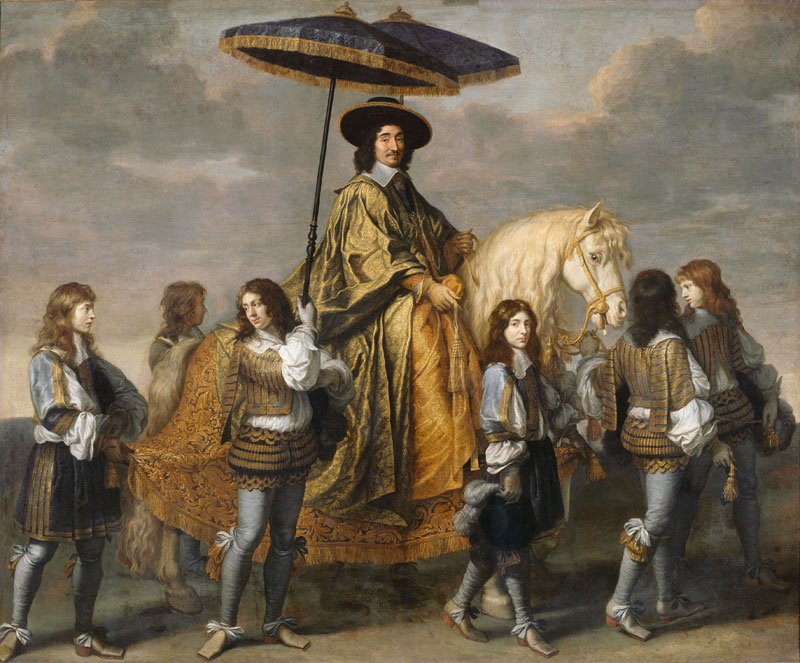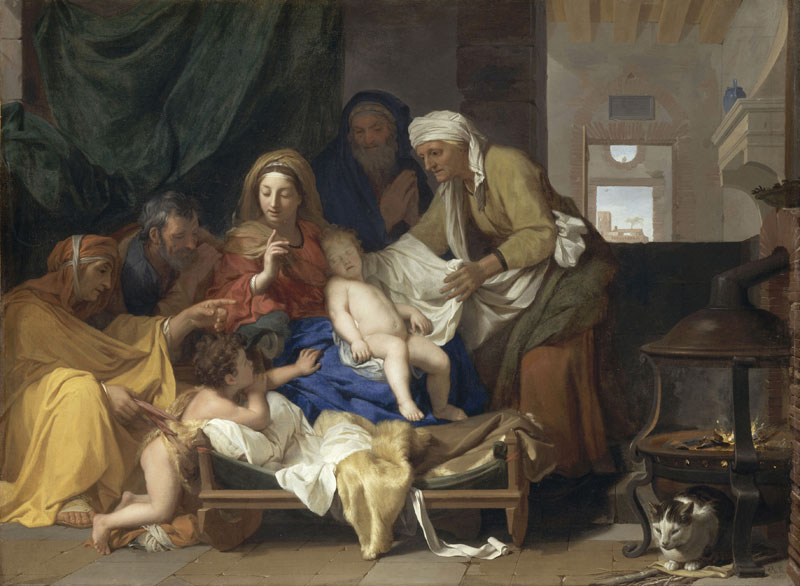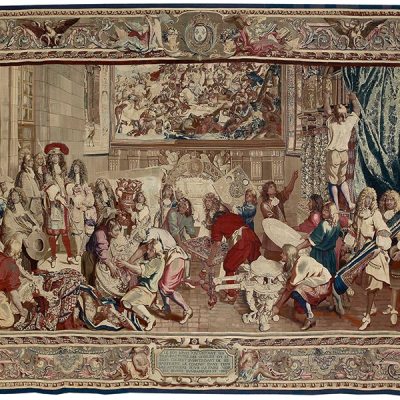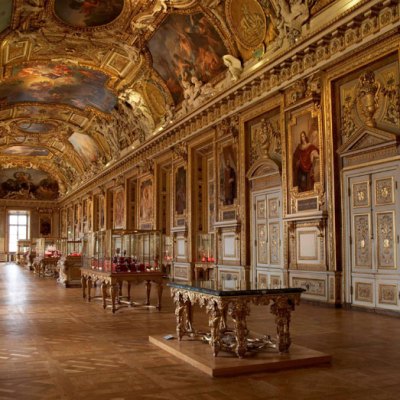No less than 53 years have passed since the last monographic exhibition on Charles Le Brun (1619–90), curated by Jennifer Montagu and the late Jacques Thuillier, and presented at Versailles under the patronage of president de Gaulle. Due to Le Brun’s close associations with France’s absolute ruler Louis XIV – after all, he is best known as the creator of the Hall of Mirrors, which celebrates the king’s military achievements – the painter has carried a political weight that has put off generations of art historians. Indeed, some still believe that their dismissal of Le Brun, whom Anthony Blunt famously described as ‘dictator’ of the arts in France, is proof of their discernment.
It is true that Le Brun was a creature of power, who gained considerable control within Louis XIV’s art administration. This summer, however, the Louvre-Lens, near Arras in the Nord-Pas-de-Calais, is trying to show us a different Le Brun (the subtitle ‘The painter of the Sun King’ hardly reflects that ambition but, as we all know, it is the press department and not the curators who decide on an exhibition title). This spectacular show seeks to detach Le Brun from Versailles and free him from the Sun King’s shadow, so that the viewer can appreciate his canvases without any political baggage. It challenges the established view that Le Brun’s output is boring, propagandistic, and far removed from the poetic and sophisticated canvases of his acclaimed tutor, the erudite Nicolas Poussin.
Equestrian Portrait of Chancellor Séguier (c. 1660–61), Charles Le Brun. Musée du Louvre, Paris

The great strength of the exhibition is the first section, which presents Le Brun as a young painter prior to entering the king’s services. It shows a talented and ambitious young man responding to and experimenting with not only the art of Poussin, but also Rubens, Van Dyck and, to one’s surprise, the Caravaggists. It also makes clear how at ease Le Brun was painting at different scales, from small oil sketches to monumental canvases. Through its chronology, the show offers a wonderful opportunity to test and cultivate one’s connoisseurship (the dreaded word), and to trace the artist’s development across his pictures (two of which may be of questionable attribution). Le Brun’s works from the mid to late 1650s in particular, such as the imposing Equestrian Portrait of Chancellor Séguier (c. 1660–61) and The Sleep of Infant Jesus (1655), bear witness to his compositional creativity and technical skill. His Judgement of Daniel (c. 1655), exhibited in public for the first time, certainly proves that he was a painter of both great learning and distinct sensitivity. Placed at the centre of the composition, Daniel, chosen by God to judge over the elder who took advantage of Susanna, visually echoes a scale of justice lit by divine light.
The Sleep of Infant Jesus (1655), Charles Le Brun. Musée du Louvre, Paris

The later sections presenting Le Brun’s productions for Nicolas Fouquet, Jean-Baptiste Colbert, and Louis XIV are slightly less exciting. The chapter on the Gobelins manufactory, over which Le Brun presided with great enthusiasm, would have gained especially from the inclusion and immediate juxtaposition of a battle scene from The History of Alexander the Great (begun in 1662) with one from The History of the King (1665–79). The artist designed and closely oversaw the production of both tapestry series; and even if these precious weavings take up an enormous amount of space, they constitute a pivotal episode in the artist’s career and cemented his position at the Gobelins as well as the Royal Academy. Nevertheless, the show does exhibit the magnificent Visit to the Gobelins (1673–78) in its introductory section, an extremely large and fine silk and gold-thread tapestry usually in store at the Mobilier national. Another lacuna may be the absence of The Queens of Persia at the feet of Alexander the Great (1660–61), which is said to have afforded Le Brun his appointment of First Painter to the King. Unfortunately, numerous restorations over the last three centuries have been unfavourable to the famous picture, as Jacques Thuillier already pointed out in the 1963 exhibition catalogue, and it is simply too fragile to travel from Versailles to Lens.
The exhibition ends with a touching epilogue: Le Brun’s final works after the death of his protector Colbert in 1683, when the artist’s position at court slowly escaped him. Although complex and ambitious, these biblical scenes, mostly from the life of Christ, reflect the quiet contemplation of an elderly painter, whose health and influence gradually declined until his death in February 1690. They close the brackets opened by Le Brun’s early works and demonstrate that, for all the impressive sculptures, tapestries, prints, and drawings, it is the paintings that make this a truly remarkable display.
The King visiting the Gobelins Manufactory (between 1673 and 1680), Jean Jans fils after Charles Le Brun. Mobilier national, Paris

Now, one may ask: why the Louvre-Lens and not the Louvre in Paris? And why 2016 and not 2019, which would mark Le Brun’s quatercentenary? The old Louvre appears still too frightened of Le Brun’s dogmatic legacy and 2019 is earmarked for the 500th anniversary of Leonardo da Vinci’s death. In any event, the modern architecture of the Louvre-Lens certainly helps distance Le Brun from the king and Versailles, even if some of the wall colours may be less conducive to the paintings than others; while the deep blues, reds, and greens offer excellent backdrops, the indefinability of the sculpture gallery’s grey with its hints of turquoise and baby blue proves something of a distraction. The complete absence of gold and stucco allows the viewer to focus on the canvases and appreciate their inventiveness and sometimes their beauty.
It is of course Le Brun’s own fault that we associate him with Louis XIV. He took such pride in being the King’s principal painter and saw to it that his historiographers emphasised his close links to the crown. Nonetheless, the curators Bénédicte Gady and Nicolas Milovanovic have to be praised for their bold claim that before becoming the visual translator of Louis XIV’s political ambitions, Le Brun was an artist of extraordinary ingenuity and erudition, in the same league as Rubens, Poussin, and Bernini. This show proves them right: it is without doubt one of the most important exhibitions of the decade.
‘Charles Le Brun: Le peintre du Roi-Soleil’ is at the Musée du Louvre-Lens, Lens, until 29 August.
From the July issue of Apollo: preview and subscribe here



